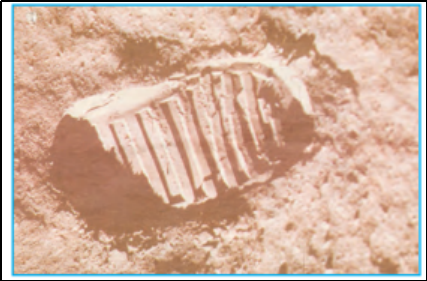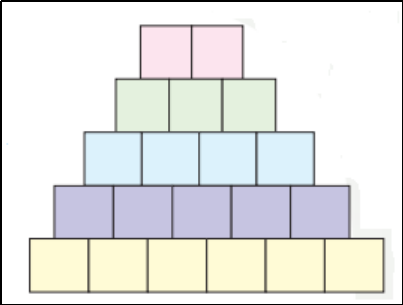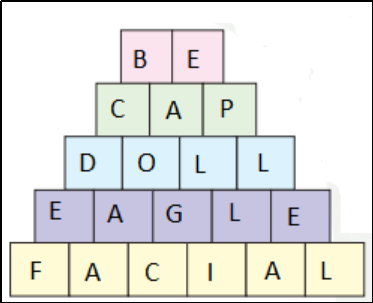English Marigold Class 5 Chapter 3 Questions and Answers - Free PDF Download
FAQs on NCERT Solutions For Class 5 English Marigold Chapter 3 Robinson Crusoe - 2025-26
1. Where can I find reliable and correct NCERT Solutions for Class 5 English Chapter 3, Robinson Crusoe?
You can find clear and accurate NCERT Solutions for Class 5 English Chapter 3, 'Robinson Crusoe,' on the Vedantu platform. These solutions are prepared by subject-matter experts and are fully aligned with the CBSE curriculum for the 2025-26 session, ensuring you get the correct methods for answering all textbook questions.
2. Why was Robinson Crusoe afraid after seeing the footprint on the sand?
Robinson Crusoe was afraid because he believed he was completely alone on the island. The sudden discovery of a man's footprint meant that someone else was there. He was terrified because he feared this person could be one of the savages from the mainland who might harm or kill him. His desire for company was instantly replaced by a fear for his own safety.
3. How did Robinson Crusoe deduce that the footprint was not his own?
Robinson Crusoe used a logical step-by-step process to deduce the footprint was not his. He concluded this because:
- He had not come to that part of the beach in a very long time.
- He checked if it could be from any of his other trips, but there was no other footprint.
- Most importantly, he measured it against his own foot, and the discovered footprint was significantly larger than his own.
4. What does the NCERT solution for Chapter 3 teach us about describing feelings in an answer?
The NCERT solutions for this chapter guide students on how to effectively describe a character's feelings. Instead of just stating 'he was scared,' the solutions show how to use words from the text to elaborate. For example, they explain how Crusoe was initially 'very frightened,' then 'ran for his life,' and looked 'frequently behind him.' This teaches students to use actions and descriptive language to convey emotions powerfully.
5. How do the Vedantu NCERT Solutions for Class 5 English Chapter 3 help in exam preparation?
These NCERT Solutions are designed to help with exam preparation by providing well-structured answers that follow the CBSE guidelines. They explain the correct way to frame responses, cover all key points from the chapter, and help students understand the underlying themes and character motivations. By studying these solutions, students can improve their answer-writing skills and score better marks.
6. What is the main theme of the story 'Robinson Crusoe' as per the Class 5 English textbook?
The main theme of the story excerpt in the Class 5 textbook is the conflict between the human need for company and the instinct for survival. Robinson Crusoe desperately longs for another person on his lonely island, but the moment he finds evidence of someone, his fear for his own safety completely takes over his loneliness, showing that self-preservation is a powerful human instinct.
7. Why is it important to answer the questions from 'Robinson Crusoe' in a step-by-step manner, as shown in the NCERT solutions?
Answering in a step-by-step manner is crucial because it ensures your answer is logical, complete, and easy for the examiner to understand. For instance, when explaining Crusoe's fear, a structured answer would first state the discovery, then his initial reaction, and finally his reasons for being scared. This method helps in building a coherent argument and ensures no important details from the text are missed, which often leads to higher marks.
8. What common mistakes do students make when answering questions about Robinson Crusoe's fear?
A common mistake is simply writing 'He was scared' without explaining why. A correct answer, as guided by the NCERT solutions, needs to provide evidence from the text. Students often forget to mention key details, such as the fact that Crusoe imagined the footprint belonged to a 'savage' or that he ran to his 'castle' (his cave) for safety. Failing to include these specifics results in an incomplete answer.
9. How should I structure my answer for the question 'What did Crusoe do after finding the footprint'?
To structure this answer correctly, you should follow the sequence of events as described in the chapter. Your answer should be structured in this order:
- First: Mention his immediate reaction of standing still in amazement.
- Second: Describe how he listened and looked around but saw nothing.
- Third: Explain his growing fear and how he ran back to his cave for safety.
- Finally: Add that he could not sleep that night due to his terror.
10. Beyond the story, what skills like vocabulary and sentence formation are covered in the NCERT exercises for Chapter 3?
The NCERT exercises for Chapter 3 go beyond story comprehension to build essential language skills. They include tasks focused on:
- Vocabulary: Using joining words like 'and', 'but', 'so', and 'because' to connect sentences correctly.
- Creative Writing: Encouraging students to write their own stories or journal entries based on prompts.
- Sentence Formation: Creating a class library and discussing books, which improves communication and descriptive language.




























